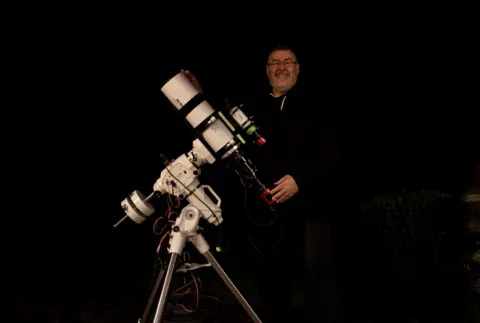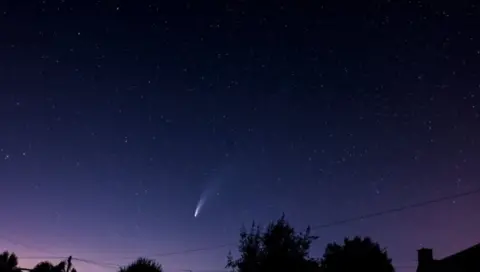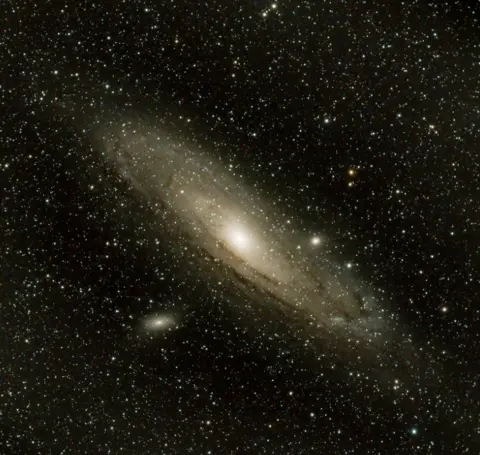Night sky mental health boost for astronomy fan
 Mike Read
Mike ReadA self-taught astro-photographer says tracking the night sky has helped him to de-stress over the past year.
Software developer Mike Read, from Corsley in Wiltshire, took up the hobby from scratch a year ago.
It made him realise "life on this planet is still very fragile and there's a whole universe out there".
He said his favourite sightings to date were the Pleiades, also known as the Seven Sisters, the Neowise comet and the lunar phases of the moon.
 Mike Read
Mike Read"It just makes you concentrate on something else and helps you get your mind into a totally different zone," Mr Read added.
He uses an equatorial mount to hold his digital camera.
Equatorial mounts are designed to align with the polar axis of the night so the planets and stars can be tracked in motion.
Also, it means long exposures can be taken, so more light is filtered into each photo, known as a light frame.
The light frames are then layered together to create a final composite, with any dust motes captured on the lens, airbrushed out.
 Mike Read
Mike Read"The highlight for me would be comet Neowise because that was a fantastic sight in the early evening sky, a beautiful comet with a tail visible to the naked eye."
He said the moon was always a point of interest.
 Mike Read
Mike Read"The moon is such a beautiful object. It is our closest neighbour and it's a very easy target.
"With a full moon, you get the complete disk.
"You can then get some real detail on it and get some nice mineralisation, because when we look at the moon we see it through our eyes as just a really bright disk with dark gray patches on it.
 Mike Read
Mike Read"When you strip that glare of the sun away you are left with some really beautiful colour and detail."
Mr Read has since set up a community group for astronomers in the local area to share photographs and tips.
Once lockdown restrictions are lifted he hopes to take more photos in Exmoor, which has dark sky status, and in Cranborne Chase in Wiltshire.
